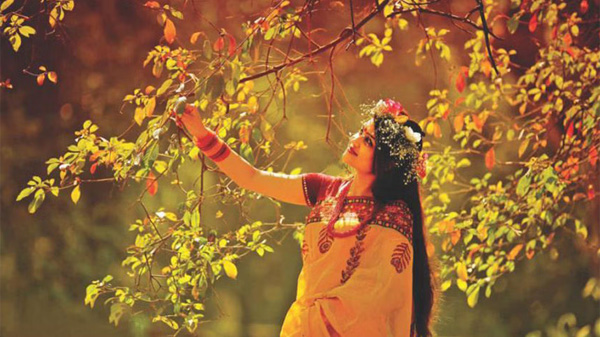Why Pahela Falgun is celebrated on February 14 instead of 13

- Update Time : Tuesday, 13 February, 2024, 08:30 pm
- 176 Time View

Online Desk: February 13 has been the date on which Pahela Falgun has been celebrated by most of us growing up. But for the last four years, Pahela Falgun has shifted to February 14 on the Gregorian calendar. This is down to some changes made to the Bangla Calendar in 2019 by Bangla Academy.
But why were these changes required?
Let’s jump back in time first. The Bangla Calendar or Bangabda, in its current form, was adopted by the Mughal emperor Akbar, and later reformed by subsequent rulers. Before that, its roots are difficult to ascertain as the calendar was influenced in different times by various kings, such as Shashanka and the possibly apocryphal Vikramaditya. The ancient Sanskrit treatise on astronomy called “Surya Siddhanta” is considered the basis of this current calendar.
But in the past, it had some flaws. For instance, the Bangla year originally was 365 days long, and it didn’t include a mechanism to account for the fact that the Earth’s orbit around the sun is actually 365 days 5 hours 48 minutes and 47 seconds.
In the 1960s, revered polyglot Dr Muhammad Shahidullah was given the responsibility to upgrade the Bangla calendar. He made the suggestion to make the first five months 31 days long, the last seven months 30 days, and to simply add a day at the end of Falgun on leap years, making it 31 days long. Similar work was done by Dr Meghnad Saha in India a decade ago as well, but the calendar upgrades have never been adopted by the Bengalis in West Bengal.
In Bangladesh, the upgrades were adopted in 1987. But that posed a different problem. By then, some important events in Bangladesh history had already taken place, like February 21 in 1952 and December 16 of 1971. These dates, according to the Gregorian calendar, had become national holidays in Bangladesh. But after the upgrade, the historical dates of the Bangla calendar on which these events took place no longer matched the new calendar.
For example, February 21 in 1952 fell on the 8th day of Falgun, but after 1987, February 21 started to fall on Falgun 9. The same thing happened to December 16, which was on the first day of Poush in 1971, but according to the 1987 version of the Bangla calendar, it fell on Poush 2. Similar problems befell the Rabindra Jayanti and Nazrul Jayanti too.
Another effect of this change was that the first day of spring, Pahela Falgun, got shifted ahead a day to February 13. While this was not a day of historical importance, over time, it became a culturally significant day for Bangladeshis, and for an entire generation, February 13 was Pahela Falgun.
The changes in 2019 were meant to align the Bangla calendar and the Gregorian calendar once and for all, aligning historical dates in both calendars to their modern day counterparts. Since 2019, the first six months (not five, like Dr Muhammad Shahidullah suggested) of the year have had 31 days. October 16, 2019 became the first instance of Ashwin 31. The rest of the six months of the year now had 30 days, other than Falgun, which had 29 days. On years divisible by four and not by 100, however, Falgun would have 30 days, taking into account the leap year.
This also meant that Pahela Falgun was once more shifted, this time back by one day, to February 14.
In practical terms, the Western holiday of Valentine’s Day and the Bangladeshi occasion of Pahela Falgun now fall on the same day. In today’s globalised world, it creates a spectacle of colours and flowers across the country as young people revel in dual celebration. This year, even Saraswati Puja falls on the same day, culminating in a case of triple festivities. But for those who have gotten used to wearing yellow on February 13 and red on February 14 – things remain a bit confusing.
















